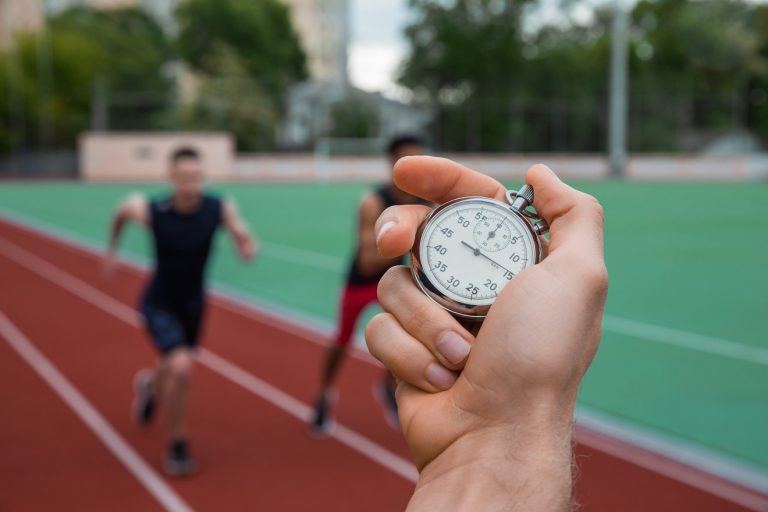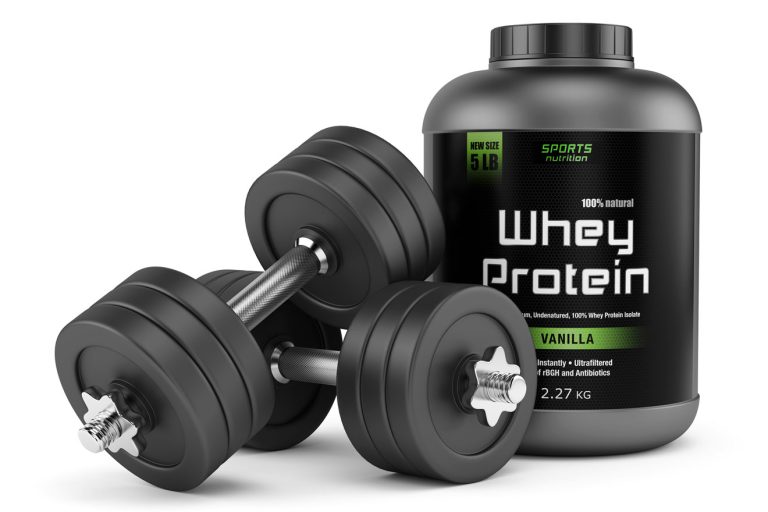Which of these three mechanisms is most important for muscle growth?
The three mechanisms
It appears simple: to build muscle, a person simply has to lift weights, eat, rest, and repeat. While this is true, few people understand why the weight training part of this formula stimulates muscle growth.
The general understanding is that weight training leads to:
- Muscle damage
- Metabolic stress
- Mechanical tension
These three mechanisms then drive muscle growth.
In this article, we will evaluate these mechanisms to see how important they really are and decide whether it’s a good idea to focus on a specific one.
1) Muscle damage
Many gym-goers are somewhat familiar with the concepts of ‘microtears’ and ‘overcompensation’. This has been a conversation thrown about by bodybuilders for decades—lifting weights causes microscopic tears to form in muscle tissue, which are then repaired by the body, leading to a bigger and stronger muscle.1
Fortunately, this concept is rooted in science, as studies have proven that weight training causes muscle damage.1 This damage leads to inflammation, which ultimately results in increased cellular activity and the release of hormonal growth factors, all of which work to repair the damaged muscle.2
Although still considered vital to muscle growth by most authorities, recent studies have sought to challenge this claim. In fact, one review concluded that muscle damage is not the process that mediates or potentiates weight-training-induced muscle growth.3 Much of this controversy arises from the revelation that muscle growth has been recorded in the near absence of muscle damage.4 As such, muscle damage may be less important for hypertrophy than originally believed.
2) Metabolic stress
Metabolic stress is the progressive accumulation of metabolites within an exercised muscle. These metabolites are the by-products of anaerobic energy production.5
The metabolites produced during physical exertion include:6
- Lactate
- Hydrogen ions
- Ammonia
- Inorganic phosphate
The build-up of these metabolites is responsible for muscle fatigue, which is experienced as a painful ‘burning’ sensation. Contrary to popular belief, the hydrogen ions, not the lactate, are responsible for this sensation.
The accumulation of these metabolites during strenuous exercise results in elevated hormone release, hypoxia (muscle deoxygenation), and cell swelling.6 All three of these variables act as anabolic signals that drive muscle growth.6
In other words, metabolic stress is not anabolic itself; it promotes muscle growth indirectly by stimulating processes that have anabolic signals.6
Metabolic stress may also promote muscle growth indirectly by inducing changes that augment muscle activation and prompt the recruitment of a larger proportion of muscle fibers.7
3) Mechanical tension
Mechanical tension refers to the tension being placed on individual muscle fibers throughout a movement, or how much force the muscle fibers produce. The amount of mechanical stress experienced depends on weight, technique, tempo, and range of motion. Generally, the ‘correct’ form and technique guidelines for given exercises are centered around maximizing mechanical tension and safety.
It is hypothesized that the force production of muscle fibers leads to mechanochemical responses occurring in the cells, resulting in anabolic signals, and therefore facilitating growth adaptations.8
As muscle damage and metabolic stress appear to be either non-essential or indirect effectors of muscle growth,4,7 this third factor may be the primary driving stimulus. This seems to be the case, as past research has shown that mechanical tension is not only the most crucial factor in muscle growth but the only variable that can prompt hypertrophy when isolated from the other contributing influences.9
Verdict
The causes of muscle growth have been studied for decades, yet the underlying mechanisms are still largely unexplained and only theorized. Despite mechanical tension emerging as possibly the most important mechanism for muscle growth, it is worth noting that all three of these factors usually occur concurrently. Because of this, it is recommended to not focus on these mechanisms, but, instead, to focus on using the right exercises, load, rep range, number of sets, and training tempo.
You can learn more about these recommendations on the How many sets and reps should you do? page of the Weight Training Guide.
References
- Proske U et al. Muscle damage from eccentric exercise: mechanism, mechanical signs, adaptation and clinical applications. J Physiol. 2001;537(Pt 2):333–45. doi: 10.1111/j.1469-7793.2001.00333.x
- Hill M et al. Expression and splicing of the insulin-like growth factor gene in rodent muscle is associated with muscle satellite (stem) cell activation following local tissue damage. J Physiol. 2003;549(Pt 2):409–18. doi: 10.1113/jphysiol.2002.035832
- Damas F et al. The development of skeletal muscle hypertrophy through resistance training: the role of muscle damage and muscle protein synthesis. Eur J Appl Physiol. 2018;118(3):485–500. doi: 10.1007/s00421-017-3792-9
- Flann KL et al. Muscle damage and muscle remodeling: no pain, no gain? J Exp Biol. 2011;214(Pt 4):674–9. doi: 10.1242/jeb.050112
- Robergs RA et al. Biochemistry of exercise-induced metabolic acidosis. Am J Physiol Regul Integr Comp Physiol. 2004;287(3):R502–16. doi: 10.1152/ajpregu.00114.2004
- de Freitas MC et al. Role of metabolic stress for enhancing muscle adaptations: Practical applications. World J Methodol. 2017;7(2):46–54. doi: 10.5662/wjm.v7.i2.46
- Dankel SJ, et al. Do metabolites that are produced during resistance exercise enhance muscle hypertrophy? Eur J Appl Physiol. 2017;117(11):2125–2135. doi: 10.1007/s00421-017-3690-1
- Schoenfeld BJ. The mechanisms of muscle hypertrophy and their application to resistance training. J Strength Cond Res. 2010;24(10):2857–72. Doi: 10.1519/JSC.0b013e3181e840f3
- Goldberg AL et al. Mechanism of work-induced hypertrophy of skeletal muscle. Med Sci Sports. 1975;7(3):185–98.







